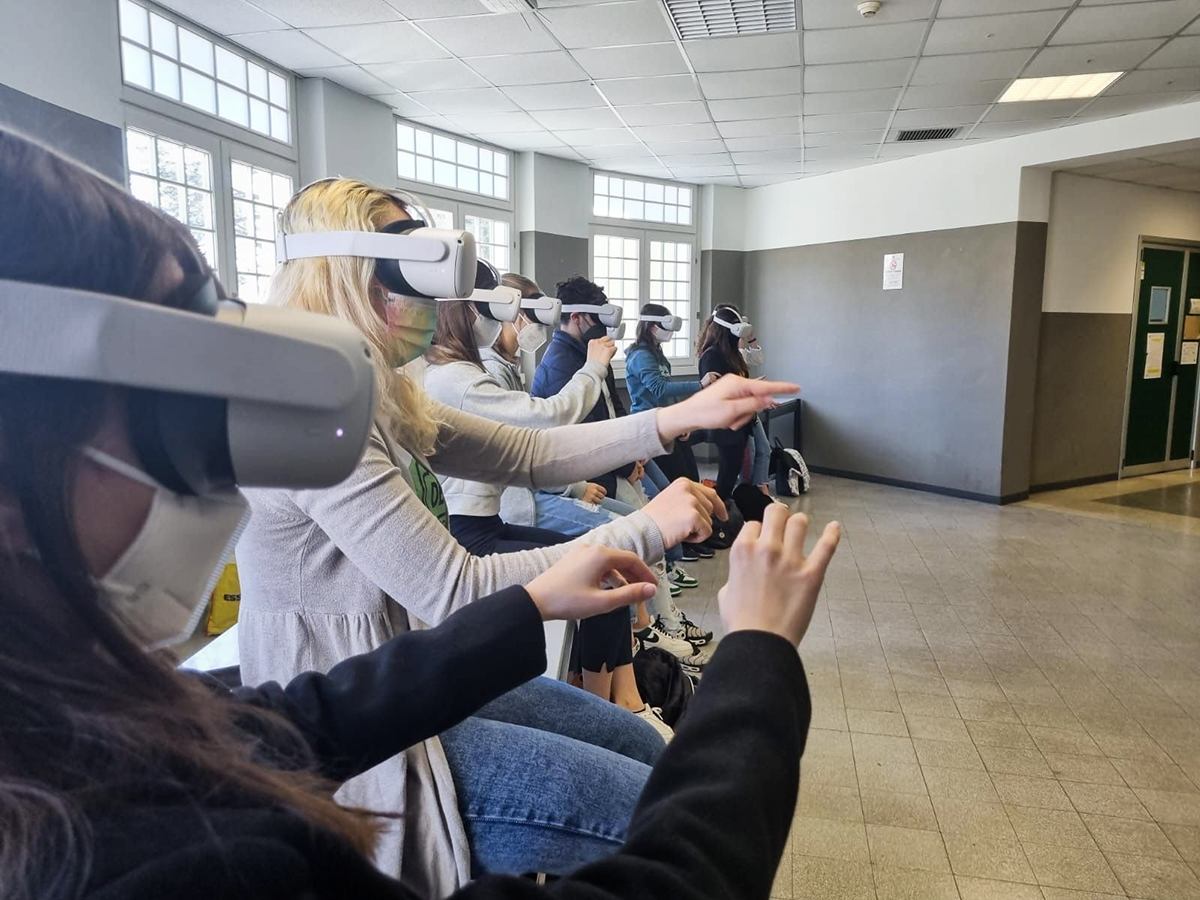UCLA alumnus’ startup to provide lab experience through virtual reality

Students use the virtual reality service created by OpenLab. Simone Zamparini, a UCLA alumnus, started OpenLab as an undergraduate. (Courtesy of Simone Zamparini)

By Leila Okahata
Nov. 30, 2022 8:57 p.m.
This post was updated Dec. 1 at 12:28 a.m.
A new startup co-founded by a UCLA alumnus aims to teach students important scientific protocols and techniques through immersion in a virtual reality laboratory.
OpenLab is a three-dimensional laboratory simulation built to prepare young scientists for real lab experiences, said Simone Zamparini, cofounder of OpenLab and UCLA alumnus. Using a VR headset that tracks the user’s hands, students can conduct experiments and learn basic biology and chemistry lab skills, he said. With this simulation, students can interact with lab equipment and tools such as pipettes without necessarily having to enter a lab in person, Zamparini added.
OpenLab was created to increase accessibility to the laboratory environment, as not every institution may have the right equipment, resources or proper training to bring students in, Zamparini said. As labs sites can contain dangerous chemicals, OpenLab also provides a safe environment for students to explore and experiment, he added.
Having a space to make mistakes can help students understand why a protocol is scripted the way it is, said Leo Liu, a chemistry doctoral alumnus who advised the early development of OpenLab.
As in-person labs can be limited in time and materials, OpenLab provides an avenue for students to be able to practice protocols an unlimited number of times, Liu said, adding that students can learn at their own pace.
Although the graphics of the OpenLab environment may be simpler than real life, engaging with objects through VR instead of passively clicking with a mouse can better reinforce learning and retention of lab techniques, Zamparini said.
“There is a lot of power in actually being in a 3D environment because we, as human beings, … learn through observing, and we learn through looking around and exploring this world,” he said. “I feel like simulation is the closest thing it gets to this experience.”
OpenLab can also allow students to visualize an experiment at the molecular level to complement their conceptual understanding of the experiment, Zamparini said. One can learn this information by reading a textbook, but being able to actually visualize that information is a powerful way to learn, he added.
Users can request custom lab protocols and techniques, Zamparini said, adding that customers can send a video or document describing the procedure, and the OpenLab team will work to add it to the software.
Fabio Bellia, a postdoctoral researcher at Fordham University who has used OpenLab and coordinated its use at the University of Teramo, said in an emailed statement that he found OpenLab to be representative of what happens in a real-life lab. He said he also used OpenLab to introduce high school students to the daily activities performed in the university’s labs.
“It was really interesting to see how students coming from different schools, as well as students of different ages, differentially learned how to use the software and achieve the results,” he said in the emailed statement. “It was also really interesting to see the improvement in practical activities among students who used the software before.”
Currently, the team is looking to bring OpenLab to more high schools to help students gain early lab experiences, Zamparini said. They also hope to implement more protocols and a progress report system that allows professors and teachers to track individual students’ improvements and errors, he said.
Having started this company as an undergraduate, Zamparini said the experience was both satisfying and challenging, as he had faced many obstacles while creating this product. Nevertheless, he said he encourages young innovators to not be afraid to start a company, no matter their age or level of experience.
“There is a level of naiveness that you need and a level of optimism that you need to start something,” he said. “If you … want to start something because maybe you know a problem, and you think you can solve that problem, I think that you should just do it.”


